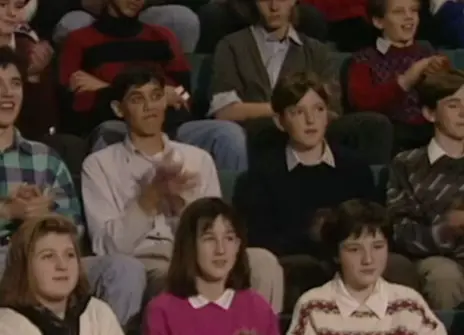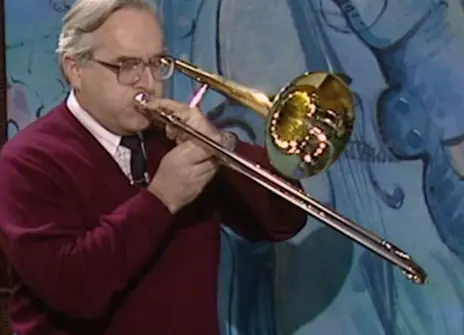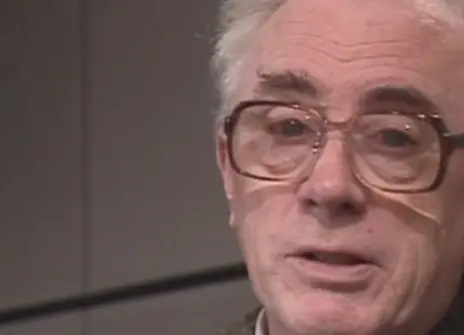About the 1989 CHRISTMAS LECTURES
Physicist Charles Taylor explores the links between science and music in these CHRISTMAS LECTURES from 1989.
From the 1989 Lecture programme:
Science and Music always seem to be treated as separate subjects by our educational system and yet large numbers of professional scientists are passionately fond of music. I was very lucky because, at school, I was taught music and physics by the same person and so was given a firm foundation for the interest that has remained with me ever since.
Science is sometimes described as the process of asking questions about the world around us and, in this course of lectures, we shall be asking a series of scientific questions about many different aspects of music beginning with perhaps the most difficult of all… 'What is Music?'
It is a fact that every sound from that of the proverbial pin dropping to the almost overpowering sound of a full choir and orchestra in an operatic climax, or from the calm of a lullaby to the deafening frenzy of a pop concert, is produced by changing the pressure of the air by a small amount. These pressure changes travel as waves to the ears of the listeners and when they are perceived by the miraculous ear-brain system they become the sensations we call sound and music.
We shall explore the basic science involved in this journey, starting with the ways in which musical instruments make the pressure changes. We shall investigate the factors that affect the quality of sound produced which stem both from the craftsmanship of the instrument maker and from the skill and artistry of the performer.
The remarkable properties of the ear-brain system have a profound effect on our perception of music and will need to be considered throughout the series. The technology of instruments (from the earliest reed pipes to the latest electronic synthesizers) has influenced the development of music and we shall look at the history of musical instruments with that in mind. Music and musical instruments have developed differently in different parts of the world and modern composers and instrument makers are now learning a great deal from other cultures.
A hundred years or so ago scientists were beginning to think that they understood many aspects of music and during the lectures we shall use some of the fascinating demonstrations from that era… in many cases using the actual apparatus that has survived in the Royal Institution. In 1819, a scientist of that period – Savart – wrote that he thought the time had come when the efforts of scientists and of artists could unite to bring the art of violin making to perfection; but it has taken over 150 years even to achieve the necessary cooperation and we are still far short of perfection. Nevertheless in many areas scientists, musicians and instrument makers are learning to cooperate successfully with each other and, especially in the world of electronic music, there has been astonishing progress even in the last five years or so.
The very complexity of the operation of the ear-brain system sometimes leads to strange results, some of which can be funny and others disturbing. So, although many of the experiments and demonstrations that we shall do in the course of our exploration will appear to be quite objective, it will often be necessary to remind ourselves that we are dealing with very subjective phenomena. The wonderful experience that we call music can only begin to be understood properly if we bring the measurements and observations out of the laboratory and apply them in the real world of performance and listening.
Lecture 5 – Scales, synthesizers and samplers
From the 1989 lecture programme:
Harpsichords and spinets are mechanised members of the plucked string family and it is well known that the major problem with these instruments is that it is difficult to make the sound vary in loudness.
In the harpsichord the problem is partly solved by having more than one keyboard, each playing an instrument of different loudness. But if, instead of using the keys to pluck a string, we use them to hit the string, some variation is possible, as in the clavichord. It is with the piano, however, that the full range of loudness is possible, and indeed the modern piano is a most extraordinary piece of mechanical engineering.
Any one learning to play a keyboard instrument has to practise scales and this is often regarded as the most boring part of the learning process. The origin of musical scales, however, is quite fascinating. They have often been likened to the grammar of music since they tend to emerge only after primitive compositions have been played or sung for a long time.
Our concern will be mainly with a problem that arises with all keyboard instruments - it is impossible to play scales in all the different keys exactly in tune and a compromise is needed. Fortunately the synthesizers that form the main material of this last lecture also provide us with convenient ways of demonstrating the problem and its solution.
The extraordinary world of synthesizers and computers has developed explosively in the last few years. One could call an electronic organ a synthesizer though of course it does not have the enormous flexibility of recent synthesizers.
Classification is difficult but broadly speaking one can trace a line of development from electronic organs to analogue synthesizers,because in both we start with purely electronic oscillations and then add, subtract, multiply, mix and perform many other functions to make up the complex sounds of useful music.
A second line of development involves digital processing in which even the basic sounds are synthesized point by point from first principles. Digital sound is also the basis of compact disc recording and that leads us on to consider quite remarkable advances in medicine that have been made possible by devices originally developed for the entertainment industry!
The third line of development can be traced from musique concrete in which tape recordings of real sounds were used to build up whole compositions by literally splicing together pieces of tape. The direct descendant is the digital sampler which can store a short natural sound in digital form and enable it to be processed electronically in a tiny fraction of the time taken by the original tape-splicing technique.
To show how these systems work together we shall use the resources of one of the most modern electronic music studios in the world, the most recently opened studio of the BBC Radiophonic Workshop.
We aim to answer many of the questions that arise in considering the partnership between science and music, but there are some difficult ones that remain. Will synthesizers replace conventional instruments? Will computers replace composers and performers? Can science explain the "shiver in the spine" that many of us feel when certain pieces of music are heard? And what totally new questions will be generated as a result of the scientific exploration of music?





